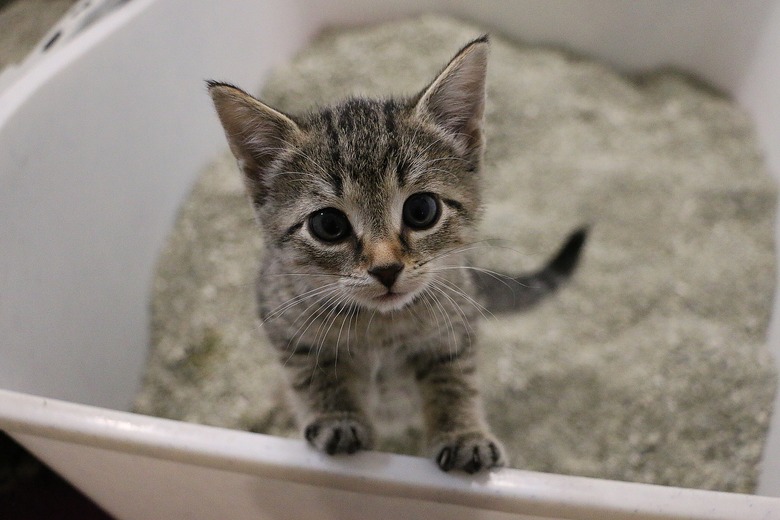How To Remove Hardened Kitty Litter From A Cat's Paw
We may receive a commission on purchases made from links.
Cuteness may earn compensation through affiliate links in this article.
Clumping kitty litters consist of small, absorbent particles that can become stuck to your cat's paws fairly easily. Some cats have a tendency to walk through their wet litter, which may lead to something like "cat cement paws." If the cat litter stuck in his paws has hardened, your cat may try to lick or chew it off. This can cause problems, as ingesting it might not be good for him.
Cleaning litter stuck in paws
Cleaning litter stuck in paws
If your cat steps in wet litter and you know it's something she does, try to use a gentle baby wipe to wipe down her paws before it hardens. It's easier to remove caked-on litter from a cat paw before it hardens. Your cat may like the extra attention of getting a "bath" with the wet wipe.
Chi Cleansing Cat Wipes are specifically designed for a cat's pH so they won't make your cat's feet dry out or itch. The wipes are safe for any part of a cat's body, so feel free to give him a wipe down from head to tail to feel fresh all over.
If your cat steps in wet litter and now has "cat cement paws," it may require a dunk of the paws in some water to loosen it. Restrain your cat by wrapping her snugly in a bath towel with all but the affected paw tucked inside. Leave her head and tail loose. If you have a helper, have him hold the cat in place and soothe her while you work.
Use your fingers to remove caked-on litter from the cat paw. Senior Cat Wellness suggests gently holding your cat's paw and wiping it with a warm, damp washcloth. Scrub gently between your cat's paw pads to remove as many particles as you can. If the kitty litter is still cemented on, hold your cat's paw in a bowl of soapy water for a few minutes before rubbing again with the washcloth.
Toxicity of kitty litter
Toxicity of kitty litter
There are many different types of cat litter, but the most common types are clumping and non-clumping. Clumping kitty litters contain particles of bentonite clay, which absorbs liquid and turns into a solid clump. These are preferred by many cat owners because it makes cleanup easier. The drawbacks of this type of litter are that it is heavy, it isn't biodegradable and it creates a lot of dust, notes Cat Health.
Some non-clumping litters are made of different types of clay, including silica. They absorb some liquid but don't form into tight clumps for easy scooping. Cat Health says this type of litter controls odor better but is more expensive and more dangerous if a cat ingests it while cleaning himself. Non-clumping litters are often made of larger particles of corn, wheat, pine sawdust, or shredded paper. These don't produce dust and are not small enough that a cat would typically be able to eat them.
BoxiePro Air Lightweight, Deep Clean, Scent Free, Hard Clumping Cat Litter uses a proprietary plant-based formula to eliminate 99% of the dust. The unique litter clumps but shouldn't be flushed down the toilet. It contains natural probiotics so that if litter does stick to your cat's paws, she's not dragging it onto your kitchen counters, bedding, or tabletops.
Controlling litter problems
Controlling litter problems
Take your cat to the veterinarian if you cannot get the litter loose from her paws. It's possible that the litter particles may have become embedded in a manner similar to a splinter and could be causing your cat significant discomfort, or the paws could have become infected.
Switching to a non-clumping litter may help to prevent similar problems in the future. Non-clumping litters are desirable because they produce no dust and are biodegradable, but they may produce allergic reactions in cats that are sensitive to any of the ingredients (such as wheat or corn). The crystal-type litters usually contain silica. VetInfo says the crystal-type cat litter can be dangerous to your cat if she eats it.
Always check with your veterinarian before changing your pet's diet, medication, or physical activity routines. This information is not a substitute for a vet's opinion.
